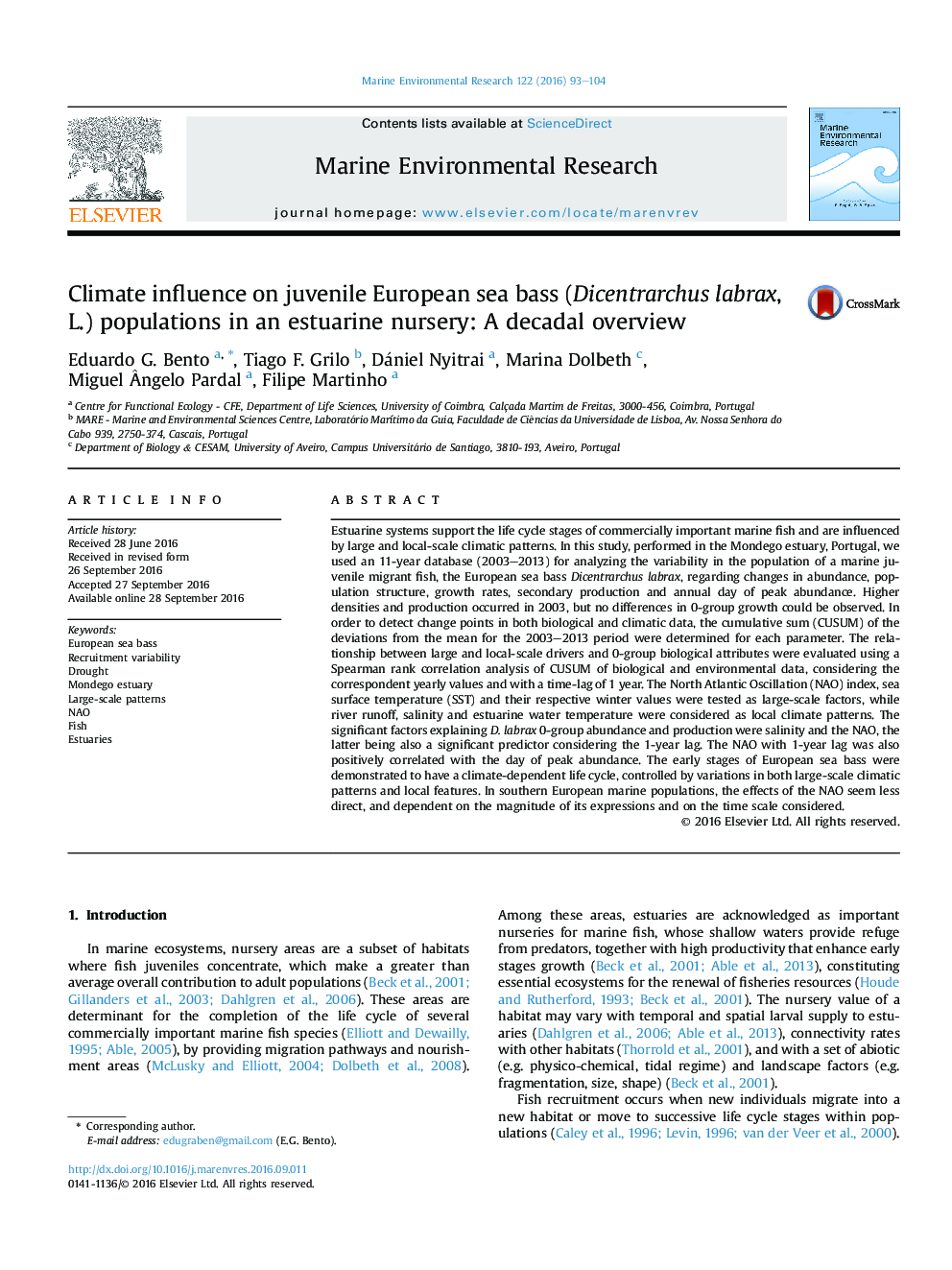| کد مقاله | کد نشریه | سال انتشار | مقاله انگلیسی | نسخه تمام متن |
|---|---|---|---|---|
| 5766316 | 1627561 | 2016 | 12 صفحه PDF | دانلود رایگان |

- 11-year study on sea bass population dynamics in the Mondego estuary, Portugal.
- Juvenile abundance varied greatly between years.
- Sea bass juveniles were mostly influenced by salinity and the NAO.
- Estuarine use by juvenile sea bass has a climate-dependent behavior.
- Sea bass abundance and production will be influenced by climate change.
Estuarine systems support the life cycle stages of commercially important marine fish and are influenced by large and local-scale climatic patterns. In this study, performed in the Mondego estuary, Portugal, we used an 11-year database (2003-2013) for analyzing the variability in the population of a marine juvenile migrant fish, the European sea bass Dicentrarchus labrax, regarding changes in abundance, population structure, growth rates, secondary production and annual day of peak abundance. Higher densities and production occurred in 2003, but no differences in 0-group growth could be observed. In order to detect change points in both biological and climatic data, the cumulative sum (CUSUM) of the deviations from the mean for the 2003-2013 period were determined for each parameter. The relationship between large and local-scale drivers and 0-group biological attributes were evaluated using a Spearman rank correlation analysis of CUSUM of biological and environmental data, considering the correspondent yearly values and with a time-lag of 1 year. The North Atlantic Oscillation (NAO) index, sea surface temperature (SST) and their respective winter values were tested as large-scale factors, while river runoff, salinity and estuarine water temperature were considered as local climate patterns. The significant factors explaining D. labrax 0-group abundance and production were salinity and the NAO, the latter being also a significant predictor considering the 1-year lag. The NAO with 1-year lag was also positively correlated with the day of peak abundance. The early stages of European sea bass were demonstrated to have a climate-dependent life cycle, controlled by variations in both large-scale climatic patterns and local features. In southern European marine populations, the effects of the NAO seem less direct, and dependent on the magnitude of its expressions and on the time scale considered.
Journal: Marine Environmental Research - Volume 122, December 2016, Pages 93-104